Slovenia: A European Gem for Your Bucket List (Regions, Part 1)
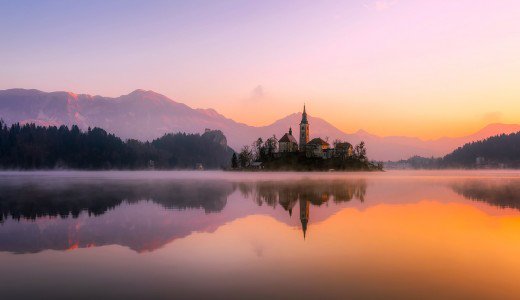
Where In the World Are You Going?
What is your idea of the dream vacation spot—Spain, Switzerland, Italy, the Bahamas?
And, what do you enjoy most when you vacation—hiking, sunbathing, or perhaps you prefer winter sports activities such as skiing or tobogganing? Do you enjoy learning about local customs and cuisine; maybe your heart beats for scenery and photography? Are you a lover of art and architecture?
What if I told you that you could find all of those interests, and more, in one idyllic location?
That place is Slovenia.
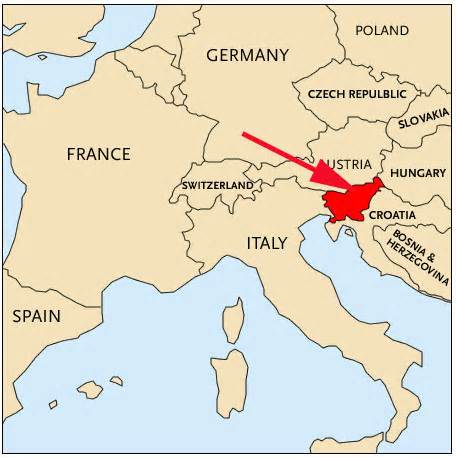
Where is Slovenia?
The Republic of Slovenia is a nation on the Adriatic Sea; it's bordered by Italy to the west, Austria to the north, Croatia to the south and southeast, and Hungary to the northeast. The capital and largest city is Ljubljana.
Slovenia occupies an area about the size of the state of Massachusetts (7,827 square miles) and has a population of 2.05 million. It is largely a mountainous republic and almost half of the land is forested, with hilly plains spread across the central and eastern regions.
Why Slovenia?
In 2006 my husband, daughters and I traveled to Europe. One of our destinations was the home of my cousin who lives near Lake Bled. Although Kenneth was born and raised in Manchester he has lived in many countries. When he and his wife Barbara visited Slovenia 30 years ago, they knew they had found their retirement home.
The 12 Regions of Slovenia
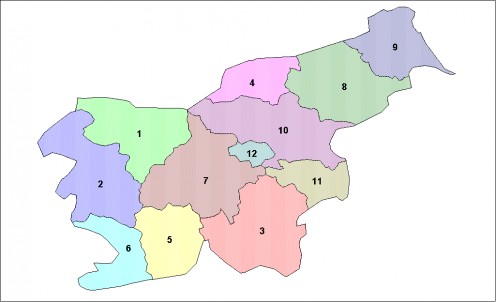
1. Gorenjska
If your visit to Slovenia is a brief one, promise me that you will visit the Gorenjska region. Here you will find Lake Bled, Lake Bohinj, and the peaks of the Julian Alps. Alpine dairy farmers and cheese makers still ply their trades in the valleys below. Hiking, cycling and fishing are popular summer tourist pastimes in this area, while in the winter one can enjoy snowmobiling, night tobogganing, and even dog sledding. The world’s best ski jumpers come to Planica each year to compete.
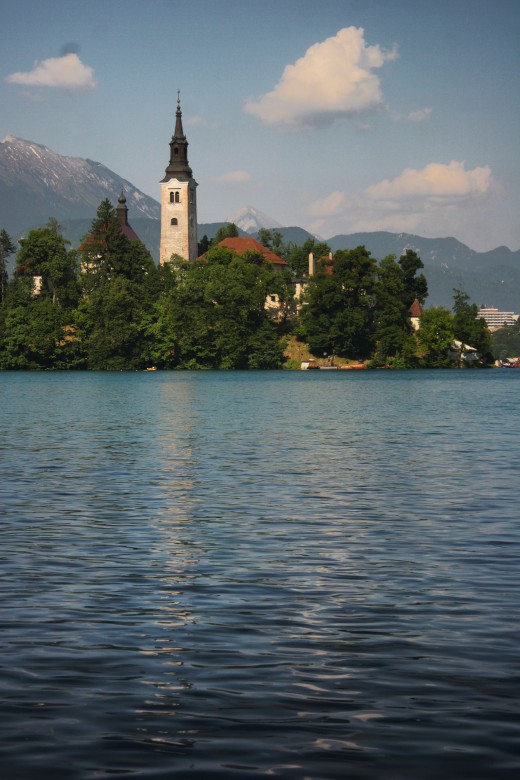
2. Goriska
Goriska is home to the Triglav, Slovenia’s highest mountain, and the centerpiece of Triglav National Park. Here you will find beautiful alpine peaks, deep river gorges, and sunny pastures. There is so much to see and do:
- the wine growing areas of Goriška Brda and the Vipava Valley,
- Julijana Botanical Gardens in Trenta, and
- the emerald river Soča, an idyllic spot for seekers of tranquility as well as those seeking adrenalin challenges. Numerous water sports are available, from kayaking and canoeing to rafting. Visitors can also experience the valley with parachutes, hang-gliders, and mountain bikes.
- History buffs will appreciate the memorials of the WWI Battles of the Isonzo at the Walk of Peace and the Kobarid Museum, which have received numerous national and international awards for excellence.
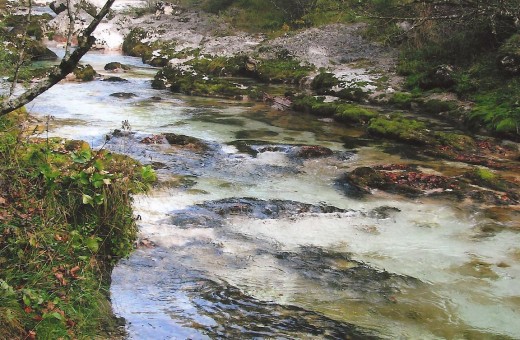
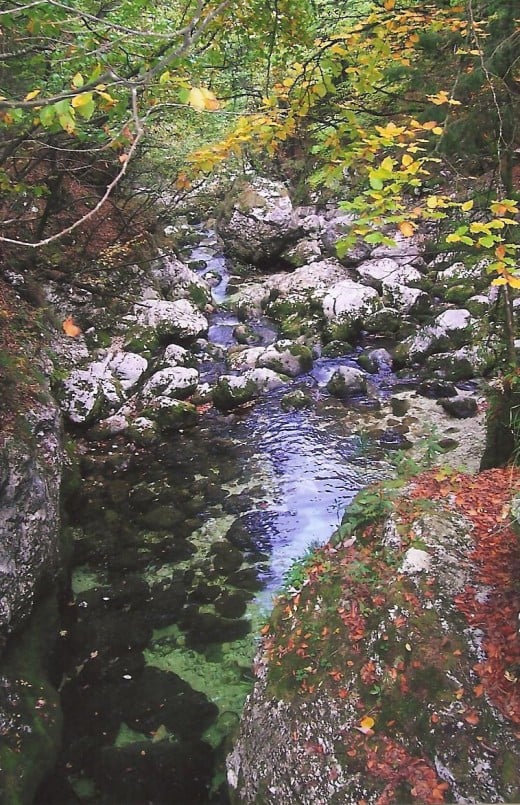
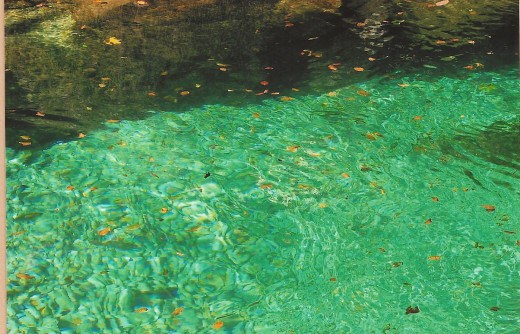
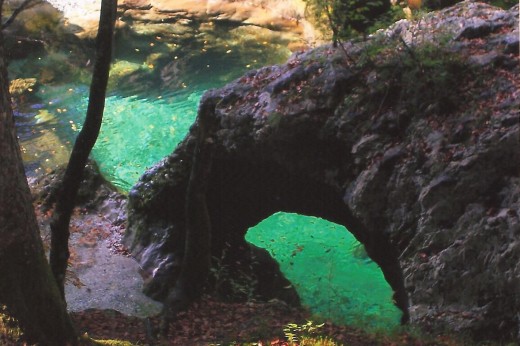
(3) Southeast Slovenia and (11) Spodnjieposavska
The Southeast and Spodnjeposavska regions are cradled above Croatia. This is the place to relax. Vineyards and hilltop churches, castles and monasteries, broad forests and birch tree groves—all of these are a part of the southeast region of Slovenia. A few of the highlights are:
-
Ribnica, the cradle of Dolenjska woodenware.
-
Kostel Castle, and, nearby, the legendary Nežica waterfall.
-
Žužemberk, the location of one of the most picturesque castles in Slovenia, the river, which once drove the wheels of watermills, makes its way over a series of weirs that today attract canoeists and anglers.
Slovenia's only island castle Otočec castle, which stands on an island in the middle of the Krka.
(4) Koroška
Koroška is considered the heart and soul of what it means to be Slovene. After the defeat of the Austro-Hungarian Monarchy in World War I, new states arose from its former territory. Among these was the State of Slovenes, Croats and Serbs. The Carinthia part became Austrian, and the Meza, Drava, and Mislinja valleys and their three mountain ranges (Pohorje, Karavanke, and Savinja Alps) became Slovenian.
This area is particularly attractive to hikers and mountain bikers. Koroška boasts the Slovenian Mountain Trail, European Long-Distance Walking Path, and numerous other themed trails.
Pohorje is blessed with deep, dark forests. In winter its alpine meadows are transformed into ski slopes. The largest ski center of the Western Pohorje is Kope. Another ski centre, Ribniško Pohorje, lies nearby. Those who prefer unfrozen water might enjoy rafting in the Drava Valley.
(5) Nostranjska-Karst Region and (6) Coast and Karst Region
In the Coast and Karst regions alpine mountains and picturesque valleys are replaced by olive groves, vineyards, orchards, and the Adriatic coast.
If you crave casinos, boating, bird watching, golfing, and fun in the sun, this is the place for you. And did you know that the noble Lipizzaner horse originated in Slovenia? Lipica, where the stud farm was established in 1580, is today a popular tourist center with a riding school, hotels, a swimming pool, a golf course, and a casino.
However, the true beauty of the Karst Regions lies not in the sunshine but underground. There are more than eight thousand karst caves and sinkholes in Slovenia. The Škocjan Caves, which are on UNESCO’s list of natural and cultural world heritage sites, boast the 1400-meter long and 150-meter deep underground canyon of the Reka River. Postojna Cave has been attracting visitors into its subterranean passages with their breathtaking rock formations for over a hundred years. A special electric train carries visitors on a tour of around five of the cave's total 21 kilometres of passages. The cave is home to the only cave-dwelling vertebrate in Europe, a pale-skinned amphibian popularly known as the 'human fish' (scientific name: Proteus anguinus).
Lovers of subterranean wonders will also be charmed by Križna Jama, a cave near Loško Polje, through which you are carried part of the way by boat. Just a few kilometres away is yet another phenomenon of the karst world: an intermittent lake. In the months when it is full of water, Lake Cerknica is Slovenia's largest lake.
What is a Karst?
A Karst is a landscape formed from the dissolution of soluble rocks including limestone, dolomite and gypsum. It is characterized by sinkholes, caves, and underground drainage systems
(7) Central Slovenia
The Central Slovenia region is dominated by Slovenia's capital city Ljubljana. Ljubljana is a political, cultural, scientific, educational, business, and transportation center that combines the characteristics of Slovenia’s eastern and western, northern and southern regions.
- The city is a cultural mecca with numerous theaters, museums, and galleries, one of the oldest Philharmonics in the world, more than ten thousand cultural events each year, and as many as ten international festivals, including the Ljubljana Summer and Jazz Festivals.
- Shoppers will appreciate both the small stores and boutiques in the old city core as well as large shopping centers.
- The University of Ljubljana, established in 1919, is the oldest, largest, and internationally best ranked university in Slovenia, being among the first 500, or the first 3%, of the world's best universities according to the Academic Ranking of World Universities. With over 63,000 enrolled undergraduate and graduate students, it is also among the largest universities in Europe.
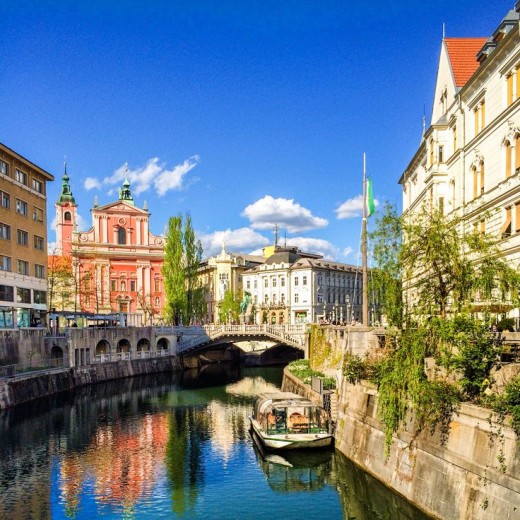
(8) Podravska Region
This region around the River Drava lures tourists with its plethora of natural and cultural sights, recreational opportunities, and gastronomic pleasures. The Podravska has something for everyone.
- Maribor is a university city and cultural center; here you will find an opera house, theaters, museums and galleries with easy access by car or city transit.
- The Mariborsko Pohorje ski area boasts the Snow Stadium and the Adrenaline Park.
- Below Marborsko Pohorje are the Haloze Hills—an amazing route of wine shops and local farms ready to provide white varietal wines and delicious foods.
(9) Pomerska
This dreamy countryside along the Mura River in eastern Slovenia is a land of wide fields and rounded hills—Slovenia’s largest agricultural region. The towns and villages along the Mura River and its tributaries are linked by excellent bicycling, hiking, and walking trails and by several wine tour roads. However, most tourists are attracted to this part of Slovenia by its thermal health resorts--the Radencia Health Resort with its more than 120-year-long tradition and famous mineral drinking water, Terme 3000 in Moravske Toplice with its many water attractions, the Lendava Thermal Spa near the hills of Lendavske gorice, and the Banovci Health Resort, which boasts Europe’s first nudist campground beside a thermal spring.
(10) Savinjska Region
Beautiful alpine valleys are just the beginning.
-
Medieval castles
-
Geothermal spas
-
Mountaineering and alpine climbing route
-
Cycling
-
Archery
-
Cross-country skiing
-
Ice climbing on frozen waterfalls
-
Caverns
-
and in the city of Ceje--castles, medieval churches, and museums (oh my!).
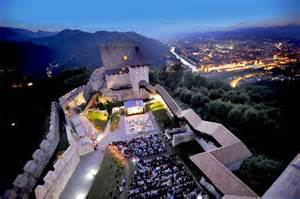
(12) Zasavska Region
Nestled in the center of Slovenia, tiny Zasavska is large in history. Railroads meander near the banks of the Sava River, a tributary to the Danube River. The Revirski Museum in Hrastnik preserves the 200-year history of coal mining. Hrastnik also boasts rich tradition of glass production.
Would You Vacation in Slovenia?
How likely are you to consider a visit to Slovenia?
I Hope You're Not Disappointed
I know that you have come to expect food-history articles and amazing recipes from me in each and every article. But don't despair. This is just the prelude to a writing on the foods of Slovenia. I promise that you will love it!
© 2015 Linda Lum







